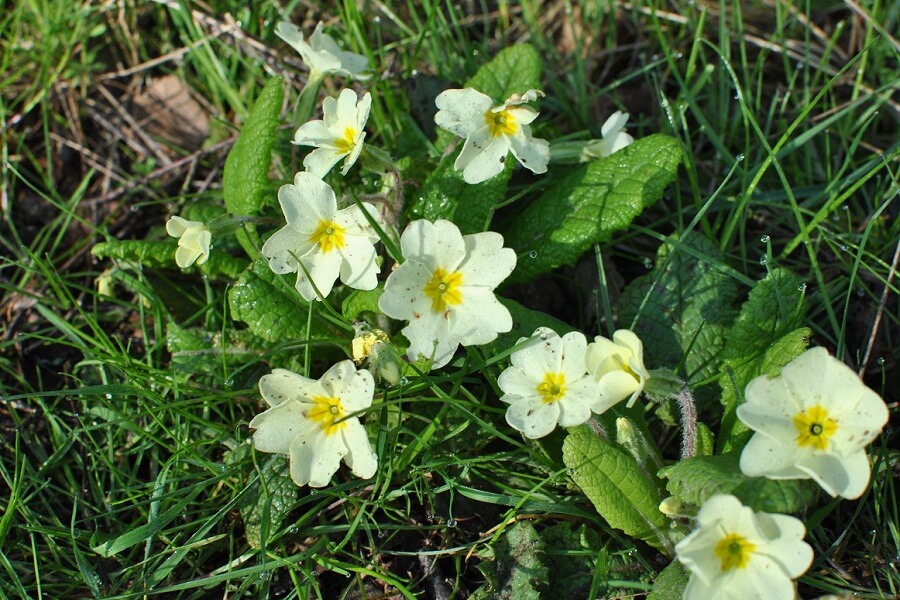It is lovely to be out walking on a beautiful Spring morning. The sun is out, the day is warming and flowers are springing up in the hedgerows.
Todays walk is in Hodgemoor, a woodland on the edge of Chalfont St Giles. Entering the woods, I’m met by the first primroses I’ve seen this year. They are such a familiar flower, so common in many gardens.
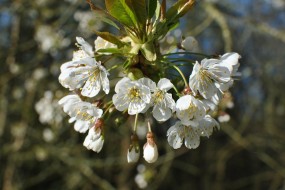
Here in the woods, the primroses are so special, it’s their true home, wild and free to grow unchecked.
When there is an abundance of primroses, it’s nice to pick a few leaves and flowers to add to and decorate a fresh Spring salad. The wild cherry trees have large clusters of buds, pearly white and many already bursting into beautiful blossom.
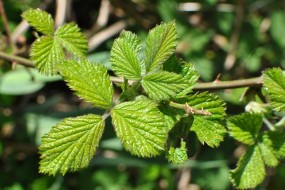
The brambles are now sprouting out their long green, spiky stems. They are reaching out across the other plants to get out into the sunshine. Bramble buds and early leaves make a lovely, delicate tea! And of course, the brambles are promising us a lovely crop of blackberries in the Autumn.
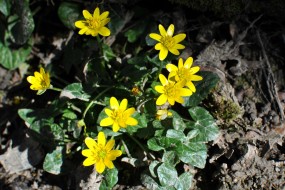
When walking in woodlands or along hedgerows, especially those with damp soils, you may see the bright yellow flowers of lesser celandine. Those flowers have 8 to 12 narrow, slightly oval petals. They have long thin stems creeping and sprawling across the ground, note their glossy, heart-shaped (cordate) leaves.
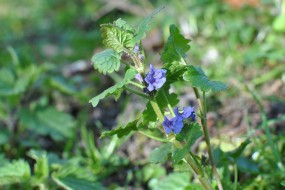
One of my favourite herbs is ground ivy. It’s leaves have a distinctive smell, rubbing a leaf between your finger tips will release a smell similar to mint. Also known as alehoof; before the introduction of hops it was used to brew ale! And why one of my favourites, Ground Ivy makes a lovely refreshing tea. Their blue flowers remind me of jelly-babies, although I’m not so sure we ever had blue ones. This is another plant that spreads out, low across the ground, tending to like damp, moist soils and a little shade.
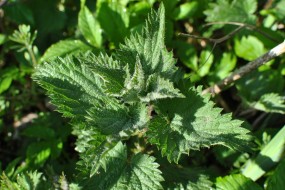
The nettle, we all know this one, childhood memories perhaps of being stung makes us very wary of the common nettle. But it truly is a wonderful plant with many uses. The young fresh leaves, especially those at the top of a stem are packed full of vitamins, and probably better for us than spinach! I like to chop them up and stir them into a hedgerow risotto, give them a wash first and don’t worry, the heat will ‘kill-off’ the stings. In the Autumn, the fibres from the stems can be used to make string, they make a very strong cordage. The nettle tops also make a slightly earthy flavoured tea, another of my favourites, do try some!
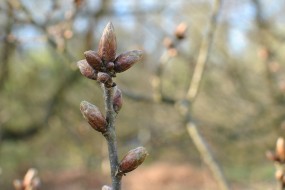
Taking a look at the trees, the buds of some formed over Winter are beginning to burst into leaf, others are waiting a little longer. Being able identify trees by their buds, the shape of the tree, the textures of the bark makes for a fun alternative to just considering their leaves. It’s a little like being natures detective. I guess most are familiar with the leaf or the deeply fissured bark of an oak tree. But have you ever looked at their buds? Note the clusters of buds at the end of the stem, not unlike those of the wild cherry.
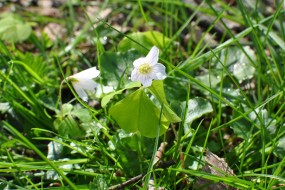
Wood sorrel is now abundant. It’s three, inverted, heart shaped leaves, initially folded back make it look a little like a clover to the uninitiated. It has a delicate white flower and if you get down close, not only will you see it’s yellow centre, but you will notice the purple veins that radiate out across the five white petals.[divider_flat]
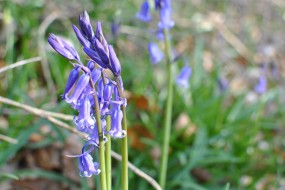 The bluebells, a true sign of Spring, those early pioneering flowers. It’s as if the first few flowers check to see what the weather holds and then communicate with the others and suddenly they all spring into life too. We are lucky here in the Chilterns, so many woodlands have bluebells and when the weather is right, there are vast numbers of beautiful blue flowers spreading across the whole woodland floor.
The bluebells, a true sign of Spring, those early pioneering flowers. It’s as if the first few flowers check to see what the weather holds and then communicate with the others and suddenly they all spring into life too. We are lucky here in the Chilterns, so many woodlands have bluebells and when the weather is right, there are vast numbers of beautiful blue flowers spreading across the whole woodland floor.
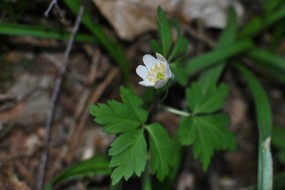
In a shady spot, near my favourite place to find wild garlic, I found a single wood anemone. It has quite distinctive foliage and a small white flower. In large numbers, wood anemones, as do bluebells, are an indicator of ancient woodlands.
You may see the common dog violet, with its purple-blue flower almost anywhere. They are common in woodlands, but just as common in the corners of the garden, at the bottom of walls and peering out from under other more dominant plants. They appear to like a mix of sunshine and shade and will spread out to find the right conditions.
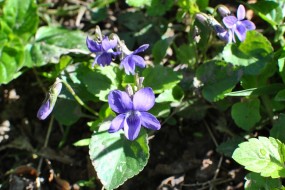
Historically the these and other violets were gathered and preserved in a sugar solution, to make pretty decorations on desserts. Once familiar with this lovely little flower, you may suddenly see them all over the place. There are quite a few around my garden and at my local allotment too.
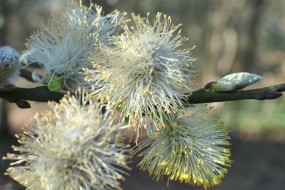
Back with the trees again, have you seen this strange looking blossom? Almost like a candy-floss, this blossom springs from the buds of the goat willow. The buds of most willow are slender, and lie flat against the twig, with a tip that points slightly inwards. The bark of the goat willow has what I describe as ‘peck’ marks. Those markings are at regular intervals around the tree trunk, it’s as if a woodpecker has visited the tree and decorated it by pecking those holes (they haven’t).
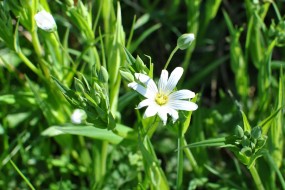
On my walk home, looking along the hedgerows I found some stitchwort. This plant tends to grow erect and tall amongst the grasses, reaching out to get its share of the sunshine. The stitchwort has long slender leaves and produces white flowers with split-petals.
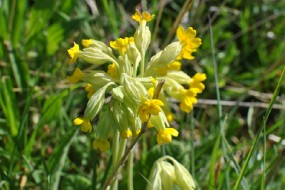
And to the final flower of what was a lovely Spring mornings walk. The cowslip, I think of it as a Primrose that hasn’t quite reached its full potential. The flowers are smaller, but similar in colour. They are delicate, often with many flowers on a single stem. Locally, the cowslip is found out in the grassy fields, gaining more sunshine, whereas the primrose likes a mix of sunshine and shade found in the woodlands.
Homeward bound I look forward to the next woodland walk. If you are interested in learning about the woodlands, then you may be interested in the guided Woodland Walks. Please feel free to have a look and check the events calendar to see when and where the next guided woodland walk is happening.
